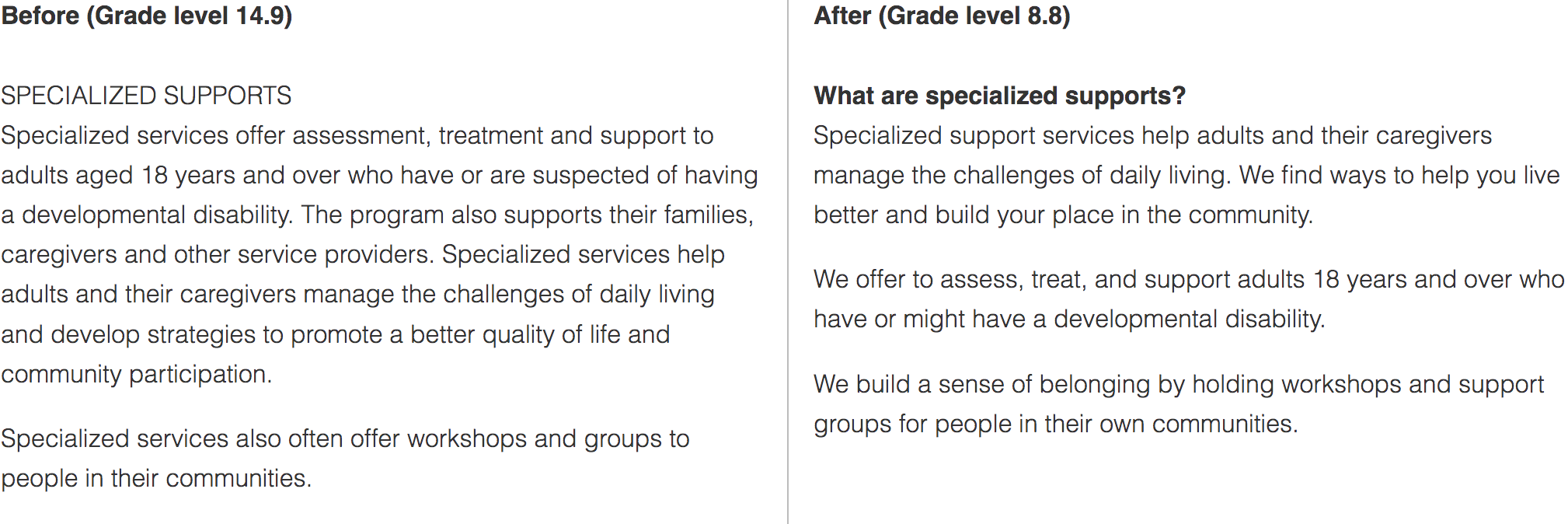Writing clearly isn’t just practical, it’s ethical
Consider for a moment how much of the world we navigate by reading. Did you know that 48% of Canadians have a lower than high-school level of literacy? This makes it essential to write clearly and accessibly because people should be able to understand the documents that affect their lives. From this perspective, clear writing upholds fundamental human rights. Here are four concrete examples of this.
Example 1—Imagine trying to speak up for yourself if you couldn’t understand the guidance documents
The Alberta Human Rights Commission hears from people who feel they have been treated unfairly based on race, gender, religion, sexual preference, and a number of other categories. The majority of complaints they receive come from Albertans who don’t speak English as a first language or who have a literacy or cognitive limitation. Let’s put ourselves in their shoes—what if you were being discriminated against at work? What if you struggled to understand the forms to submit a human rights complaint?
Being able to understand what you read is the right behind the right
Clear, accessible documents are essential to upholding fundamental human rights. Luckily, the Commission recognized their human-right-complaint forms were quite complex and difficult to read. With support from Wordsmith, the Commission revised them. See the complete version here.
Example 2—It matters to communicate policy clearly for audiences like veterans and their families
Wordsmith has done work with the federal Office of the Veterans Ombudsman, who gave us permission to share a before-and-after example we developed while working with them.
The original shows a style that is common in policy writing and government content, and it’s a bit tough to grasp. There are very important ideas here, but “insider” language makes it hard for most of us to understand. We revised this excerpt with input from the writer to make sure we got it right. How easy are these excerpts to understand?
Example 3—What if you had a learning or cognitive disability?
This is web content from a group that serves people with developmental disabilities and the people who care for them. The original is on the left, and the version Wordsmith rewrote is on the right. It’s an example of writing to better connect with the readers of the site. Notice your experience as you read each of them.
Example 4—Read this incredible decision from a judge writing to a young man who is being sentenced
This is a decision from 2015 from an Ontario court. It was a radical change in style for the judge, driven by the desire to truly communicate with the young man he was sentencing, rather than using a more conventional legal style. Here’s an excerpt, with the link to the full decision below.
Read this whole decision.





